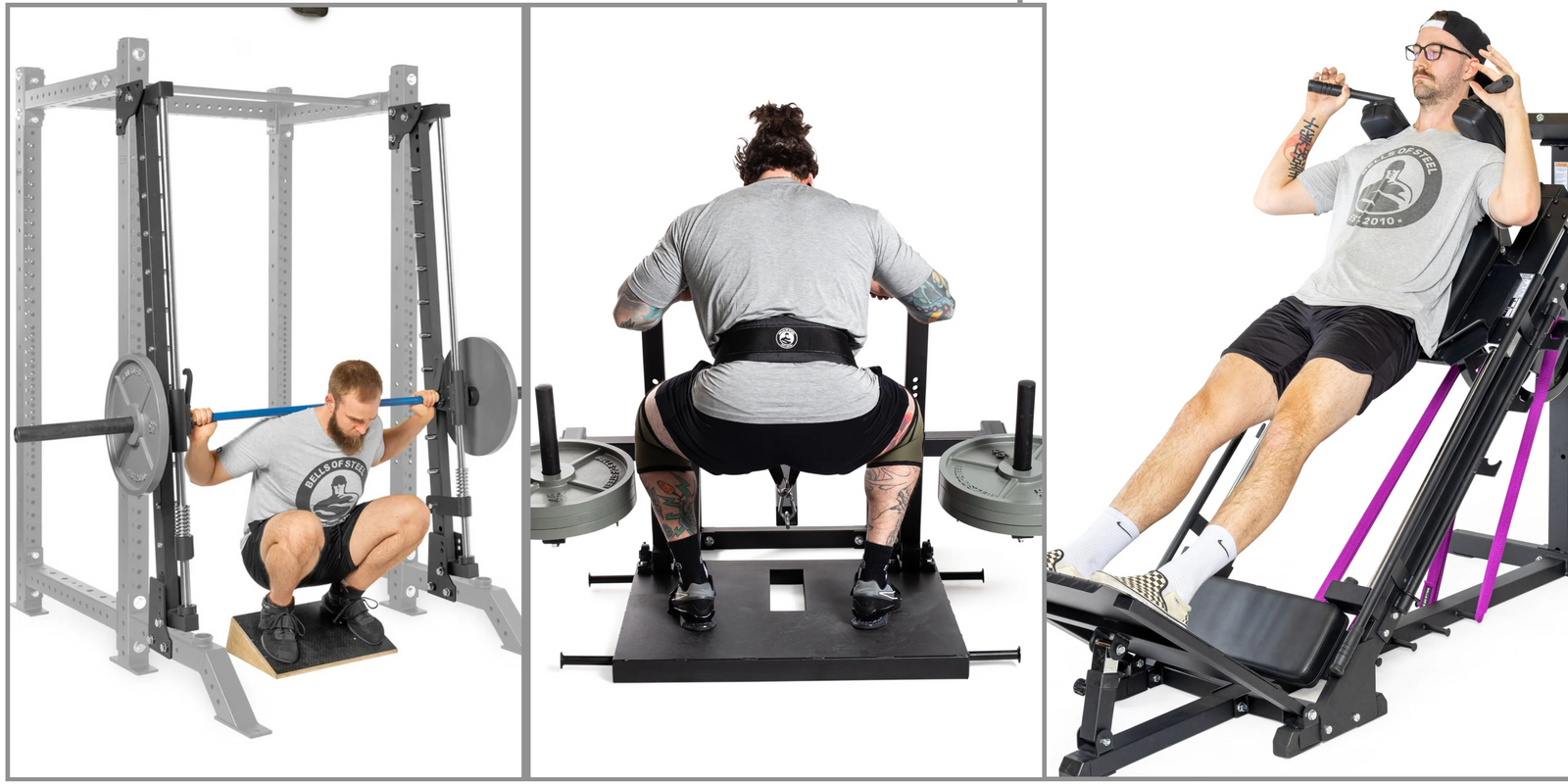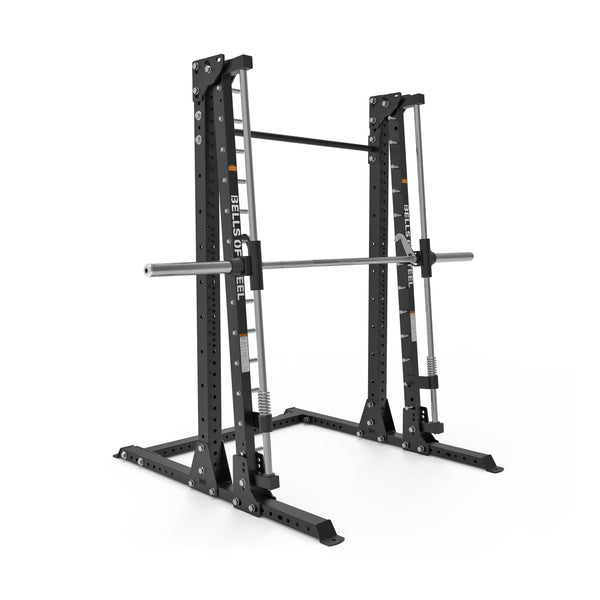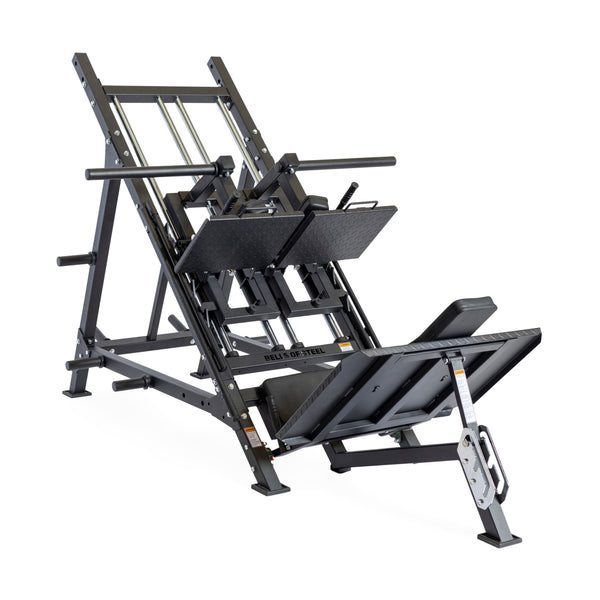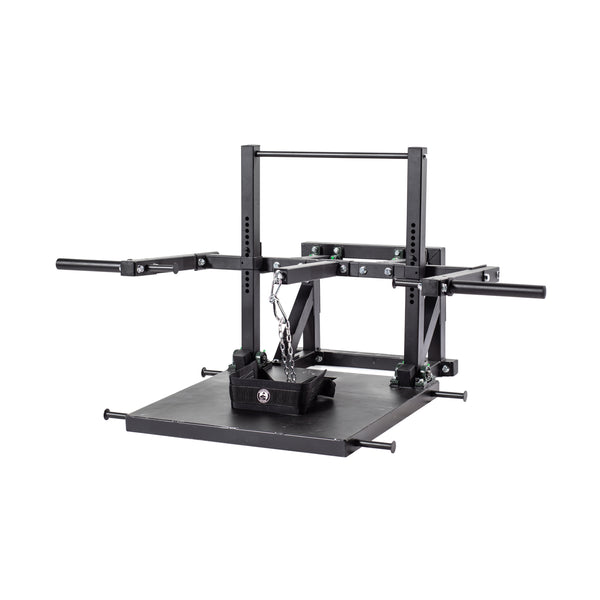Squats are a cornerstone of strength training, but not everyone can or wants to—perform them with a barbell. Enter the squat machine: a powerful, joint-friendly way to build lower-body strength at home without needing a spotter or perfect technique.
In this guide, you’ll discover the best squat machines for home gyms, what makes them so popular, and which one might be the best fit for your space, training goals, and budget. From space-saving options to heavy-duty leg blasters, we’ll break down everything you need to know.
Why Use a Squat Machine in a Home Gym?
A squat machine offers many of the same benefits as traditional barbell squats, but with added safety and joint support. Instead of relying on balance and technique, machines guide your movement, reduce injury risk, and isolate muscle groups more efficiently.
Benefits of Squat Machines
-
Joint-friendly: Less strain on knees, hips, and spine
-
Beginner-safe: Guided motion is easier to learn
-
No spotter needed: Safer for solo lifters
-
Muscle isolation: Focus more on quads, glutes, or hamstrings
-
Volume-friendly: Easier recovery from high-rep training
Types of Squat Machines for Home Gyms
Smith Machine
The Smith machine uses a barbell fixed to vertical rails, creating a guided squat path. It’s often found in commercial gyms but is increasingly popular in home gyms due to its versatility.
Pros:
-
Built-in safety
-
Doubles as a bench press or row station
-
Reduces need for balance
Cons:
-
Movement path can feel unnatural
-
Doesn’t train stabilizer muscles
Belt Squat Machine
The belt squat is a favorite among lifters with back or shoulder limitations. It loads the legs using a belt around the hips, sparing the spine while still delivering serious leg gains.
Pros:
-
Spinal-load free
-
Great for heavy leg days
-
Versatile for other movements (marches, rows)
Cons:
-
Requires a raised platform or machine
-
Some versions have limited depth or motion
🏋️ Tip: Bells of Steel’s belt squat attachment for lever arms adds belt squats to your existing rack setup without taking up extra floor space.
Hack Squat Machine
The hack squat uses a sled-like movement to target the quads with back support and reduced strain on the lower back.
Pros:
-
Great quad isolation
-
Fixed path for consistent technique
-
Good for high-volume hypertrophy work
Cons:
-
Larger footprint
-
Can emphasize knees if foot position is off
Pendulum Squat Machine (Coming Soon)
The pendulum squat machine uses a swinging arm that mimics a more natural squat motion. It’s smooth, deep, and brutally effective for hypertrophy.
Pros:
-
Deep range of motion
-
Balanced tension across quads and glutes
-
Comfortable, fluid movement
Cons:
-
Large and costly
-
Not widely available for home gyms—yet
Sissy Squat Machine
This compact machine is designed for quad-focused bodyweight or lightly loaded squats. It holds your feet and calves in place to emphasize deep knee flexion.
Pros:
-
Space-saving
-
Affordable
-
Extreme quad isolation
Cons:
-
Not suitable for heavy loading
-
Hard on knees for some lifters
Compact Alternatives to Full Squat Machines
Not ready to invest in a full squat machine? Try these alternatives:
-
Core sliders or glute ham sliders: Great for sliding leg curls and bodyweight squat and lunge variations
-
Mini sissy squat machines: Small but mighty options for focused quad work
-
Resistance bands: Add banded resistance to air squats or goblet squats
-
Dumbbell front squats: A simple but effective substitute using minimal equipment
These options work well in small home gyms or as supplemental movements when barbell or machine squats aren’t practical.
Frequently Asked Questions
What’s the best squat machine for home gyms?
If you want versatility, the Smith machine is a strong choice. For joint-friendly leg training, go with the belt squat. The hack squat is best for pure quad hypertrophy.
Are squat machines good for beginners?
Yes. The guided path of movement makes squat machines safer and easier to learn for those new to lifting.
Can squat machines build muscle?
Absolutely. Squat machines allow for progressive overload and high-volume training, both key drivers of muscle growth.
Are belt squats safer than barbell squats?
Yes—for the spine and shoulders. Belt squats offload weight from the upper body and allow you to train your lower body hard without spinal compression.
Which squat machine takes up the least space?
The sissy squat machine is the most compact. For a balance of functionality and footprint, consider belt squat attachments for your power rack.
Final Thoughts
Squat machines are an excellent addition to any home gym, whether you're looking for joint-friendly options, quad isolation, or a way to squat without a barbell. From space-saving sissy squat benches to heavy-duty belt squats and hack machines, there’s a solution for every lifter.
As always, consider your goals, space, and budget when picking the right one. And don’t be afraid to mix and match—for home gym lifters, variety keeps training fun, safe, and effective.






